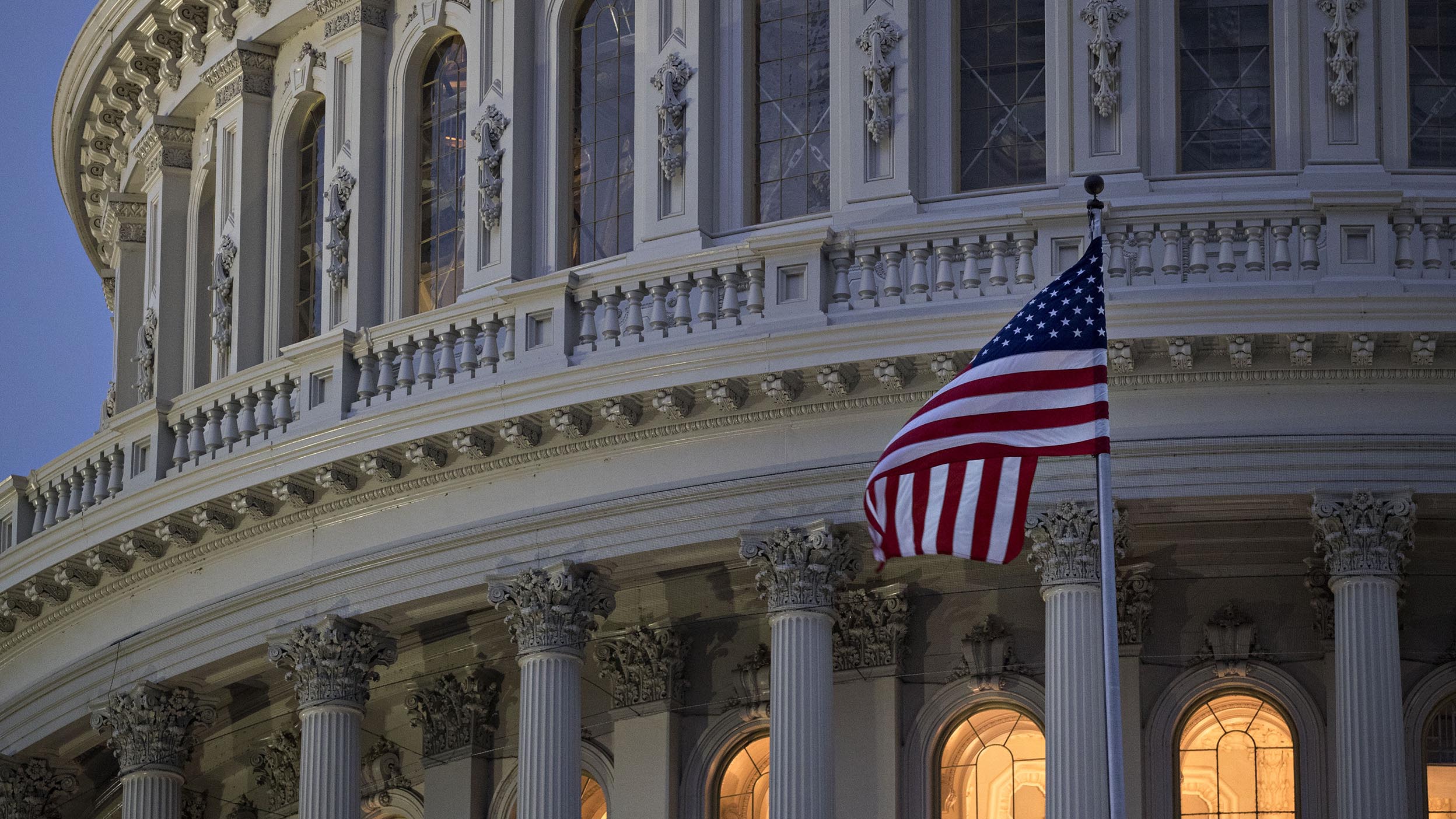
Markets and Economy Above the Noise: Will policy uncertainty harm the US economy?
While the setup for markets was good coming into 2025, they’ve struggled as investors assess ongoing changes to the US policy approach.

Tightening cycles in 1984 and 1990 led to banking issues but didn’t result in severe recessions or threaten the global financial system.
Bank asset quality, in aggregate, is sound.1 Today’s challenges are funding and liquidity issues.
That’s how tightening cycles tend to play out. Policymakers are ready to respond and financial system should withstand challenges.
The ghosts of 2008 Global Financial Crisis are still haunting us. Fears are mounting that high-profile bank failures, including Silicon Valley Bank (SVB) and Signature Bank, will expose the interconnectivity of the global financial system, resulting in other dominos falling. In 2008, it became a game of whack-a-mole for policymakers that only concluded with massive support for the entire system. By that time, however, the broad U.S. stock market had already fallen close to 60%.2 It’s no surprise then that the three recent bank failures and the crisis of confidence in Credit Suisse have investors concerned. Credit Suisse is, after all, larger than Lehman Brothers. Are we right to be conjuring the images of 2008?
Financial crises are a part of tightening cycles. However, not all crises resembled 2008. For example, the tightening cycle of 1983-1984 culminated in a bank run on Continental Illinois, which had been the seventh largest bank in the U.S.3 Similarly, the savings and loan crisis of 1990 followed a period of significant policy tightening. Over 1,000 financial institutions failed as ever-higher borrowing costs exceeded the income generated on loans they had made.4 Nonetheless, the events of 1984 and 1990, while challenging, did not result in severe recessions or threaten to bring down the global financial system. Bank failures have been common over the years — less so in a zero-rate world — but have not always led to “the big one.”
A fundamental feature of the 2008 Global Financial Crisis was that many of the largest and most interconnected banks in the U.S. became insolvent. This was a direct result of their leveraged exposure to the U.S. housing market. Assets like mortgage-backed securities, for example, were worth far less than stated and the leverage was significantly greater than had been claimed. The banks failed because of bad loans and poor credit underwriting. Remember NINJA loans, “no income, no job, no assets?”
That’s not the case today. Bank asset quality, in aggregate, is sound.5 Silicon Valley Bank (SVB), for example, didn’t fail because it was exposed to worthless assets. Rather, most of the assets on its balance sheet were U.S. Treasury bonds, albeit with lower interest rates than offered in the primary market. SVB failed because the tech start-ups, who were their primary customers, began pulling deposits as they were losing access to venture capital funding. SVB couldn’t overcome having to sell the Treasury bonds at significant losses to try to match the deposit withdrawals. Its failure led to a disquieting weekend for the smaller and/or regional banks in the U.S., but the challenges were largely alleviated once the U.S. Federal Reserve emerged as a lender of last resort.
As is often the case, policymakers put out one fire only for another one to start — the deteriorating confidence in Credit Suisse, which has long been a troubled bank. It posted poor quarterly results and was informed by their largest shareholder that they would not be putting more money into the bank. Credit Suisse, unlike SVB, is a large global integrated financial institution. A crisis in confidence could ripple throughout the global financial system. Credit Suisse, unlike Bear Stearns and Lehman Brothers in 2008, however, has a sound asset base. They’re not sitting on a pile of worthless assets. The challenge, instead, is a funding and liquidity issue. The Swiss National Bank announced they’ll provide funding support to Credit Suisse if necessary.
Lest I sound too Pollyanna, there are still challenges and the potential for something else to break — whether it’s a hedge fund, shadow bank, or something else entirely remains to be seen. It’s likely, though, that another entity will emerge with significant unrealized losses buried in its portfolios. That’s how the end of tightening cycles tends to play out. If the past days, however, are any indication, then policymakers stand ready to respond to challenges as they unfold. Further, the global financial system is in much better shape to withstand such challenges than it was in 2008.
Financial shocks always test nerves, and this time is no different. They don’t always have to be as severe as 2008, our recency bias notwithstanding. For what it’s worth, 1984 and 1990 proved to be good long-term buying opportunities for many investors.6
Source: U.S. Federal Reserve. As represented by tier one capital ratios.
Source: Bloomberg. As represented by the peak to trough decline associated with the 2008 recession in the S&P 500 Index.
Source: Federal Deposit Insurance Corporation
Source: Federal Deposit Insurance Corporation
Source: U.S. Federal Reserve. As represented by tier one capital ratios.
Source: Bloomberg. As represented by the 5-year returns from 1985 to 1989 and 1991 to 1995 of the S&P 500 Index.

While the setup for markets was good coming into 2025, they’ve struggled as investors assess ongoing changes to the US policy approach.

We discuss the future of US inflation, the outperformance of European stocks, the potential impact of new tariffs, and the independence of the Federal Reserve in this month’s column.

US inflation concerns are likely overdone, and any tariffs from the Trump administration are likely a one-time price shock rather than a new inflationary trend.
NA2796382
Important information
Image: Cavan Images / Getty
Some references are U.S. centric and may not apply to Canada.
This does not constitute a recommendation of any investment strategy or product for a particular investor. Investors should consult a financial professional before making any investment decisions.
All investing involves risk, including the risk of loss.
Past performance does not guarantee future results.
Investments cannot be made directly in an index.
In general, stock values fluctuate, sometimes widely, in response to activities specific to the company as well as general market, economic and political conditions.
The risks of investing in securities of foreign issuers, including emerging market issuers, can include fluctuations in foreign currencies, political and economic instability, and foreign taxation issues.
Fixed-income investments are subject to credit risk of the issuer and the effects of changing interest rates. Interest rate risk refers to the risk that bond prices generally fall as interest rates rise and vice versa. An issuer may be unable to meet interest and/or principal payments, thereby causing its instruments to decrease in value and lowering the issuer’s credit rating.
Investments focused in a particular sector, such as financials, are subject to greater risk, and are more greatly impacted by market volatility, than more diversified investments.
The S&P 500® Index is a market-capitalization-weighted index of the 500 largest domestic U.S. stocks.
Quantitative tightening (QT) is a monetary policy used by central banks to normalize balance sheets.
The Global Financial Crisis (GFC) refers to the period of extreme stress in global financial markets and banking systems between mid 2007 and early 2009.
Mortgage-backed securities (MBS) are investment products similar to bonds. Each MBS consists of a bundle of home loans and other real estate debt bought from the banks that issued them. Investors in mortgage-backed securities receive periodic payments similar to bond coupon payments.
A NINJA loan is a slang term for a loan extended to a borrower with little or no attempt by the lender to verify the applicant's ability to repay.
The tier 1 capital ratio is the ratio of a bank's core tier 1 capital—that is, its equity capital and disclosed reserves—to its total risk-weighted assets.
The opinions referenced above are those of the author as of March. 15, 2023. These comments should not be construed as recommendations, but as an illustration of broader themes. Forward-looking statements are not guarantees of future results. They involve risks, uncertainties and assumptions; there can be no assurance that actual results will not differ materially from expectations.
This link takes you to a site not affiliated with Invesco. The site is for informational purposes only. Invesco does not guarantee nor take any responsibility for any of the content.